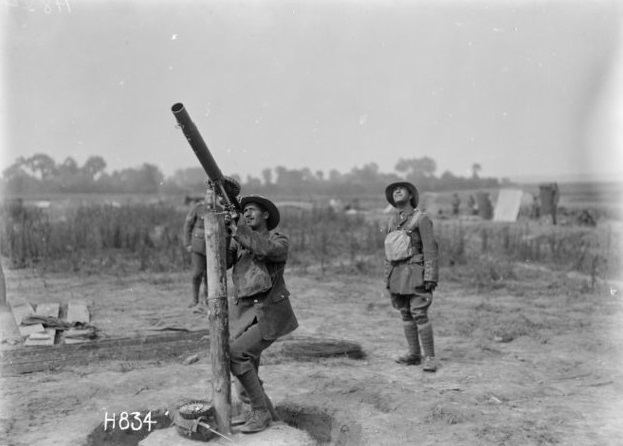Active 1915–1919 Type Pioneers | Country New Zealand Size ~900 personnel | |
 | ||
Branch | ||
The New Zealand (Māori) Pioneer Battalion, or Native Contingent and Pioneer Battalion, was a battalion of the New Zealand Expeditionary Force that served during World War I. The battalion was first raised in 1915 and served at Gallipoli and the Western Front, primarily as pioneers. "By the end of the war, 2227 Maori and 458 Pacific Islanders had served in what became known as the Maori Pioneer Battalion. Of these, 336 died on active service and 734 were wounded. Other Maori enlisted (and died) in other battalions as well."
Contents
Recruitment
When the First World War broke out, Māori leaders responded in various ways. Some, such as Rua Kenana Hepetipa, maintained total opposition to Māori enlistment. Others such as Āpirana Ngata, Paraire Tomoana, and Maui Pomare, were in favour of Māori enlistment and organised recruitment drives, particularly in the Waikato region of Ngāti Maniapoto and the East Coast Ngāti Porou region. Their recruitment campaign was particularly successful in Ngāti Porou, which enlisted enough men to form its own company in the battalion. Some companies were also supplemented by recruits from the Cook Islands and Niue.
By 1916 the battalion was in desperate need of reinforcements. As part of the drive to recruit more soldiers, the song Te Ope Tuatahi was composed by Āpirana Ngata. It became famous during the First World War and was adopted as the anthem of the battalion. In 1917, again in need of reinforcements, Paraire Tomoana composed an additional verse to the song, specifically encouraging enlistment in Ngāti Kahungunu, and other eastern regions of the North Island.
After their initial enlistment, recruits were organised into their respective companies and undertook basic training at Narrow Neck camp in Auckland.
Gallipoli Campaign
The battalion first departed New Zealand in February 1915 aboard the SS Warrimoo, arriving in March for further training in Egypt. Despite requests made to Major-General Alexander Godley by New Zealand Minister of Defence James Allen and Māori MPs Āpirana Ngata and Maui Pomare, the battalion was not deployed to Gallipoli with the first invasion force in April 1915. Instead it was kept in reserve and placed on garrison duty on the island of Malta, where further training was undertaken. However, increasing casualties among the Anzac forces at Gallipoli led to the deployment of the 461 man battalion. The battalion arrived at Anzac Cove on 3 July 1915. Here they joined the New Zealand Mounted Rifles and were deployed as infantry soldiers. In 1917, the battalion was renamed the New Zealand Maori (Pioneer) Battalion. After the Gallipoli there was considerable criticism of three officers of the Māori Pioneers, who were charged with desertion in the face of the enemy. Godley sent them home and broke up the Māori force when it was sent to France. In France the Māori troops were interspersed with troops from the Otago Mounted Rifles Regiment who were adapted into the pioneer role after suffering many casualties at Gallipoli.
Service on the Western Front
It was intended that the battalion would be broken up and serve as reinforcement for other New Zealand units on the Western Front. However, after a short time the unit was reunited and served the rest of the war as pioneers digging trenches and drains, doing farm work, laying railway lines, erecting wire entanglements, burying artillery cables and building a cinema called "Kapai Theatre". Much of the time the soldiers were engaged in making support or communication trenches well behind the front lines. When they had to work closer to the front they usually worked at night.
During the winter months of 1916 the pioneers were well behind the front lines in comfortable billets where they were able to use local cafes and hotels, and socialise with French civilians. Often during these times they were able to play rugby against other military teams. In letters home they praised the French beer which was very cheap, and the good quality champagne. They had time to observe French farmers and those soldiers with a farming background made critical comments about the backward French methods. Although leave was rare most soldiers had a chance to visit England and Scotland to take in the sights. They had the opportunity to visit tourist attractions in London. The war diaries of the battalion say casualties were well below the rate for the NZ infantry Division, but this was due to their service being primarily behind the lines. On at least one occasion the battalion was used to launch stealthy attacks on German trenches, armed with bayonets and patu.
In late August 1916 the battalion was engaged at the Somme, and began work on an 8 kilometre communication trail known as 'Turk Lane.' At Messines Ridge, the battalion suffered 155 casualties, including 17 deaths. In December 1916, 43 Māori soldiers from the Māori Pioneer Battalion joined the New Zealand Tunnelling Company in the lead-up to the Battle of Arras. In 1917 the remnants of the Otago Mounted Rifles Regiment, which made up 50 per cent of the battalion's remaining strength, was replaced by newly arrived Māori reinforcements. Around the same time a contingent of 150 Niue Islanders was sent home after failing to adapt to the conditions in Western Europe. The last reinforcements was predominantly composed of Cook Islanders, and most were sent to join the Rarotongan company in the Palestine campaign. At the conclusion of the war the battalion was involved in an unpleasant incident when a group of Māori soldiers, possibly suffering from battle fatigue, started shooting in a rest camp. When an officer was sent to investigate he was shot.
Post-War
After the war, the battalion was the only battalion of the New Zealand Expeditionary Force to return home as a formed body and toured throughout the country. Since the war, many Māori communities have built memorials for the battalion at their respective marae.
